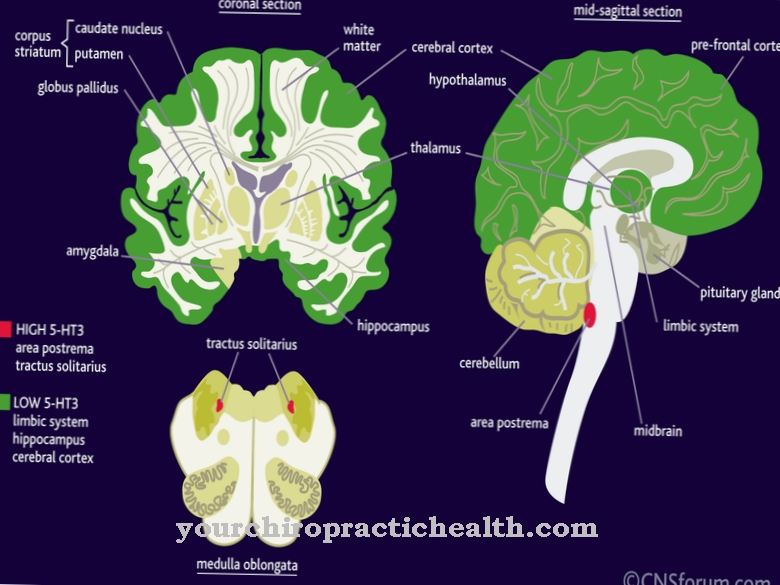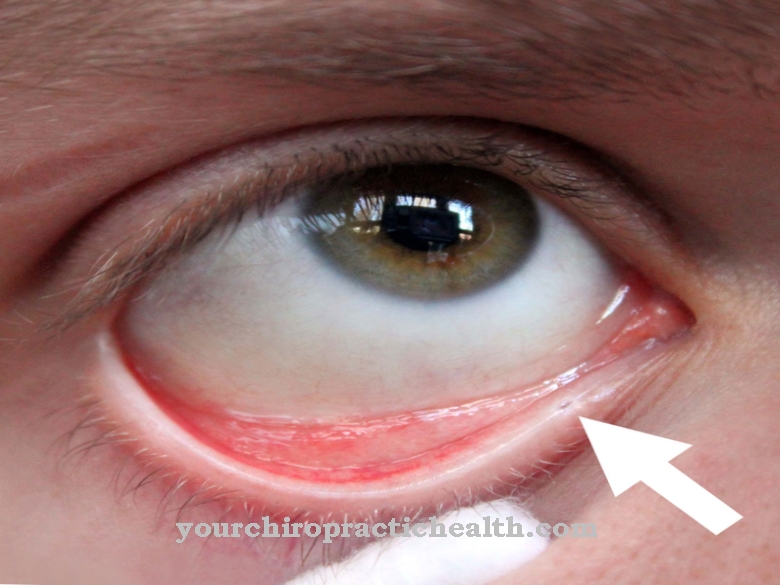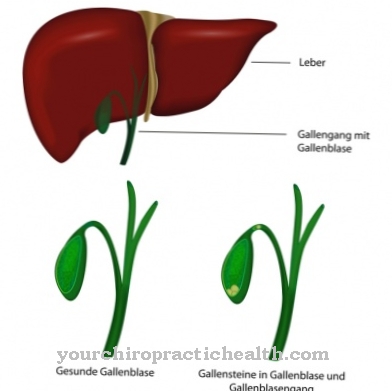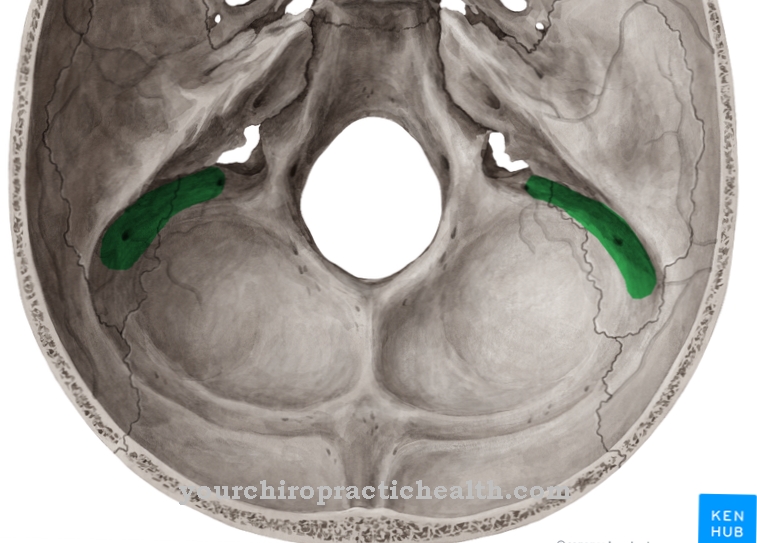The Auditory pathway consists of specially somatosensitive fibers that transmit the impulses received from the organ of Corti to the primary and secondary auditory cortex of the cerebrum. The first instant of the auditory pathway are the sensory cells of the auditory sense, which convert sound into electrical impulses. Hearing impairments can be attributed to impaired conductivity within the auditory pathways.
What is the auditory pathway?
The organ of Corti forms the seat of the sense of hearing. Located in the cochlea of the human inner ear, the organ corresponds to a complex system of receptors, supporting cells and nerve fibers. Specialist somatosensitive fibers within the auditory sense are known to medical professionals as the auditory pathway. They run from the organ of Corti in the inner ear to the primary and secondary auditory cortex in the cerebrum.
Auditory impressions are recorded here and connected via several neurons. The first neuron of the auditory pathway is located in the ganglion spirale cochleae. Its central processes target the cochlear nuclei of the medulla oblongata. The fifth neuron targets the primarily auditory cortex in the transverse temporal gyri of the temporal lobe and thus reaches the auditory cortex.
Central hearing takes place in the audio tracks. This is purely neural hearing, also known as auditory perception. Often a direct part is distinguished from an indirect part in the second neuron of the auditory pathway. The auditory pathway contains not only ascending (afferent) but also descending (efferent) nerve tracts with activated core areas, the so-called auditory nuclei. The central structure begins with the sensory cells of the inner ear.
Anatomy & structure
The first neuron of the auditory pathway corresponds to a bipolar nerve cell in the spirale cochleae ganglion, whose central processes project onto the cochlear nucleus of the medulla oblongata.
At this point, the sensory impressions are switched to the second neuron, the direct part of which passes from the posterior cochlear nucleus, unswitched, through the upper olive complex and over the lateral lemniscus on the opposite side, in order to penetrate to the inferior colliculus and to be switched to the third neuron. The indirect part of the auditory pathway runs at this point from the anterior cochlear nucleus to the opposite side and includes interconnections such as the superior olivary nucleus and the trapezoid nucleus corporis. This indirect part is known as the corpus trapezoideum.
In the third neuron, auditory fibers in the form of the lateral lemniscus run to the inferior colliculus and are partly connected to the fourth neuron. From the inferior colliculus, the fibers reach the medial geniculate body via the inferior colliculus brachium and project onto the fifth neuron. The fibers of the auditory pathway run sublenticularly at this point and cross the internal capsule. The fifth neuron projects into the primary auditory cortex.
Function & tasks
As part of the auditory system, the hearing pathway is one of the sensory systems and plays a role in auditory perception. In land creatures such as humans, airborne sound is transmitted to the fluid-filled inner ear when hearing. The mechanical energy of the sound waves is converted into electrical energy by the inner hair cells by means of mechano-electrical signal transduction. In the axons of the auditory nerve, this energy travels to the brain in the form of action potentials.
In humans and other mammals, the auditory pathway ultimately begins with the sensory cells of the inner ear, which use glutamatergic synapses to excite individual nerve cells with cell bodies in the spiral ganglion. The excited nerve cells belong to the auditory nerve, which leads fiber systems to the snail cores of the medulla oblongata. In the upper olive kernel complex, differences in transit time and intensity differences between the two ears are evaluated in order to be able to assign the direction of sound sources. Crossing and coupling of auditory fibers enable directional hearing. Incomplete perceived information of the individual ears can also be completed thanks to the side couplings.
The audio track plays a major role, especially for central hearing. This form of neural hearing comprises two stages: processing at the unconscious level and then conscious perception. Central hearing as unconscious processing is a permanent process that also takes place during sleep. In contrast, conscious perception remains limited to the waking state. The importance of central hearing compared to peripheral hearing has only recently been recognized for humans.
You can find your medication here
➔ Medicines for earache and inflammationDiseases
For a long time, age-physiological deficits in hearing processing were equated with a general impairment of hearing. In the meantime, medicine has recognized that aging-related hearing loss is not only due to hair cell damage in the inner ear, but also to changes in the central neuronal hearing processing.
Central hearing loss can, for example, be due to Alzheimer's disease, which leads to incorrect evaluation of what is heard. This phenomenon does not only occur in the context of age-physiological dementia, but can also be associated with inflammation or strokes. Nerve conduction-related hearing loss also occurs with growths on the auditory nerve. The sound conduction through the hearing organ in the inner ear runs properly in such growths. However, the space occupation can compress nerves in the auditory pathway so that the electrical potentials no longer properly reach the brain. This type of hearing loss is also referred to as neural hearing loss.
Complicated tone sequences such as language are only partially recognized as a consequence. Patients with neuronal hearing impairment hear that something is being said but cannot understand what is being said. Inner ear diseases with involvement of the auditory nerve also hinder the neural transmission of impulses. The result is sensorineural hearing loss, which can be associated with damage to the auditory pathways. Even with standard auditory perception, these interrelationships can cause a disturbance of the auditory impression that is related to neural disturbances of the auditory pathway line.



























